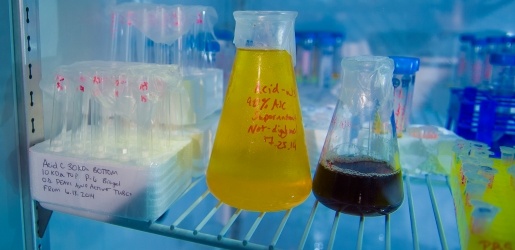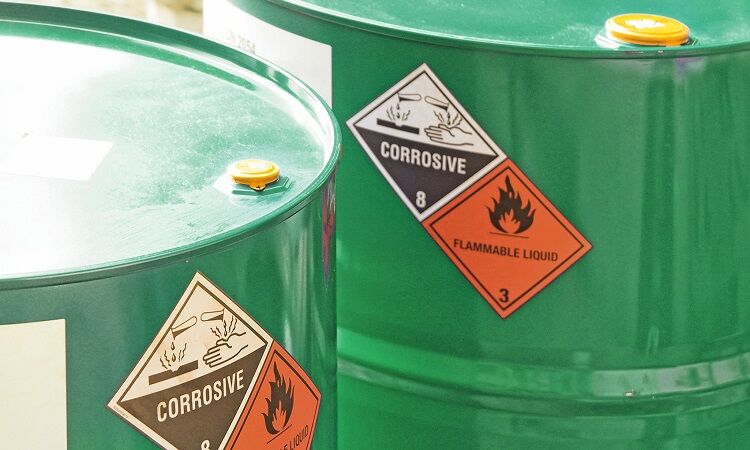Industrial Wastewater Treatment: Customized Solutions for Complicated Wastewater Challenges
Industrial Wastewater Treatment: Customized Solutions for Complicated Wastewater Challenges
Blog Article
How Liquid Waste Disposal Works: A Comprehensive Summary of Strategies and Technologies Used

Overview of Fluid Waste Types
The complexity of fluid waste types necessitates a comprehensive understanding of their characteristics and implications for disposal. Liquid waste can generally be classified right into a number of types, including industrial, metropolitan, farming, and contaminated materials. Each category shows distinct homes, needing details management methods to mitigate ecological and health and wellness dangers.
Industrial fluid waste originates from making processes and usually has a variety of contaminants, such as heavy metals, solvents, and organic substances. Metropolitan liquid waste, mostly comprising wastewater from households and business facilities, consists of raw material, nutrients, and microorganisms (industrial wastewater treatment). Agricultural fluid waste, consisting of runoff from farms, might contain fertilizers, pesticides, and animal waste, posing threats to water high quality and communities
Harmful fluid waste is identified by its toxicity, sensitivity, or possible to cause injury. Comprehending these diverse liquid waste types is essential for developing reliable disposal techniques and guaranteeing compliance with ecological guidelines.
Physical Treatment Methods

Testing is the first action, where larger bits and particles are gotten rid of from the fluid waste using screens or grates. In sedimentation storage tanks, much heavier particles work out at the base, developing a sludge layer, while the made clear liquid can be more treated.
Filtering is another important approach that entails passing the liquid through permeable products, such as sand or membrane layers, to catch smaller particles. This action boosts the high quality of the liquid, making it suitable for succeeding treatment procedures.

Chemical Therapy Strategies
Chemical therapy techniques are crucial for efficiently handling fluid waste, particularly in attending to dissolved and colloidal impurities that physical approaches might not properly eliminate. These methods make use of numerous chemical representatives to counteract, speed up, or change hazardous substances into less dangerous kinds.
One typical method is coagulation and flocculation, where chemicals such as alum or ferric chloride are added to promote the gathering of put on hold fragments. This procedure improves sedimentation, enabling for much easier removal of the resulting sludge. Additionally, oxidation processes, employing agents like chlorine or ozone, are used to damage down complicated organic compounds and virus, providing the waste much safer for discharge or additional treatment.
Neutralization is another crucial technique, which readjusts the pH of acidic or alkaline waste streams to neutral degrees, avoiding possible injury to downstream systems and the atmosphere. Additionally, advanced oxidation procedures (AOPs) utilize mixes of oxidants and ultraviolet light to break down consistent pollutants, attaining a higher degree of treatment efficiency.
Organic Treatment Procedures
Biological therapy processes play an essential role in the monitoring of fluid waste by using microorganisms to disintegrate organic issue and minimize contaminant degrees. These procedures can be extensively classified into aerobic and anaerobic treatments, each utilizing specific microbial communities to achieve efficient waste degradation.
Cardiovascular therapy involves using oxygen to facilitate the malfunction of natural materials by germs. This procedure is typically applied in triggered sludge systems, where oygenation containers offer a favorable environment for microbial growth, bring about the oxidation of natural toxins. The resultant biomass can be separated from dealt with effluent via sedimentation.
On the other hand, anaerobic treatment happens in the lack of oxygen, relying upon different germs to damage down natural issue. This approach is especially helpful for high-strength waste, as it creates biogas, a renewable energy source, while reducing sludge production. Technologies such as anaerobic digesters are often used in metropolitan and commercial applications.
Both aerobic and anaerobic biological treatments not only decrease the environmental impact of liquid waste but also facilitate source recovery, making them important elements of sustainable waste management strategies. Their efficiency, effectiveness, and adaptability support their prevalent application across numerous fields.
Arising Technologies in Disposal
Ingenious methods to fluid garbage disposal are swiftly you could check here advancing, driven by innovations in innovation and an enhancing emphasis on sustainability. Amongst these arising innovations, membrane bioreactors (MBRs) have actually acquired grip for their capability to integrate biological therapy with membrane filtering, resulting in top quality effluent that can be reused in numerous applications. MBRs enable smaller sized footprints and much more effective procedures contrasted to conventional systems.
One weblink more appealing advancement is the usage of anaerobic food digestion combined with nutrient recuperation technologies, which not just deals with fluid waste however additionally generates biogas and recoups beneficial nutrients like nitrogen and phosphorus. This double advantage enhances source performance and decreases ecological effect.
Additionally, advanced oxidation processes (AOPs) are being taken on for the degradation of complicated natural pollutants. These techniques make use of effective oxidants and catalysts to break down impurities at the molecular level, using a very reliable solution for challenging waste streams.
In addition, the integration of man-made knowledge and equipment understanding in waste administration systems is maximizing functional performance and anticipating upkeep, leading to decreased prices and boosted ecological conformity. These modern technologies mirror a significant shift towards more effective and sustainable fluid garbage disposal techniques.
Verdict
In conclusion, reliable liquid waste disposal demands a thorough understanding of numerous techniques and modern technologies. By continuously progressing these approaches, it becomes feasible to deal with the expanding challenges connected with liquid waste, inevitably contributing to ecological protection and source recuperation.
Liquid waste disposal is an important aspect of environmental monitoring, requiring a detailed understanding of various strategies and technologies customized to various waste types. Liquid waste can generally be categorized right into numerous types, including industrial, municipal, agricultural, and dangerous waste. Agricultural fluid waste, consisting of runoff from farms, might include plant foods, chemicals, and pet waste, positioning dangers to water top quality and communities.
Different physical therapy methods play an essential role in managing liquid waste efficiently - industrial website link wastewater treatment.In final thought, effective liquid waste disposal necessitates a thorough understanding of numerous methods and modern technologies
Report this page